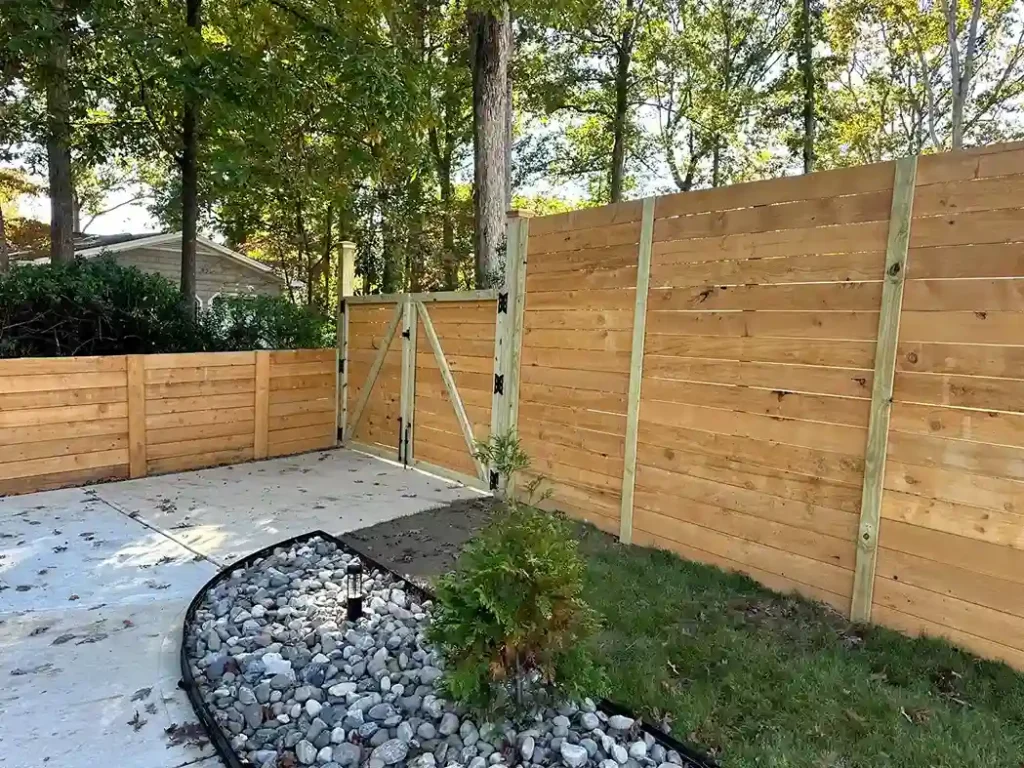Fences do more than mark boundaries — they help shape the character of a community. The right fence blends into its surroundings, enhancing privacy, security, and curb appeal.
Here, where Southern charm meets modern design, homeowners often look for a balance between tradition and style. From picket fences in historic districts to sleek aluminum or composite in newer developments, the best choice depends on HOA guidelines, property size, and neighborhood tone.
If you’re planning a new installation or an upgrade, understanding local trends and standards can save you time and ensure the project feels right at home. For expert guidance, work with a local fence company in Mooresville that knows the materials, HOA rules, and neighborhood preferences that define the region’s most popular styles.
Historic Downtown Mooresville: Respecting Tradition

Downtown feels like stepping back in time—brick sidewalks, shaded porches, and rocking chairs that have seen decades of summers. With early-1900s Victorians beside Craftsman bungalows, fences here should complement, not compete.
Wood picket fences are timeless—painted white or left cedar-toned, they frame front yards without blocking the view. Slat spacing matters: wide enough to reveal the garden, close enough to define the space. Homes with ornate trim or tall windows often suit wrought-iron or aluminum designs—black metal, simple finials, and classic curves fit the district’s historic feel.
Proportion is everything. A fence that’s too tall or too modern can unbalance a century-old home faster than you’d think. Stick to heights that align with porch rails or window bases so everything feels visually anchored. You’ll see this idea play out across the historic district: harmony over flash.
If you’re curious how design choices like these can influence home appeal, take a look at our Mooresville fence styles that boost property value. It’s surprising how much the right profile or material can affect both charm and appraisal numbers, especially in character-driven neighborhoods.
NASCAR-Influenced Developments: Bold, Modern, and Functional

Head south toward neighborhoods shaped by Mooresville’s racing roots, and the change is instant. Homes here are sleeker, lines sharper—the kind of architecture that welcomes bold, modern fencing. You’ll see it near Mooresville Golf Range and Mini Golf, where design leans into sharp geometry and outdoor spaces blend with open driveways.
Horizontal wood-slat fences hit that balance perfectly. They feel fresh but warm, especially when treated in neutral stains like ash, espresso, or driftwood gray. For homeowners chasing longevity, composite panels offer the same aesthetic with less maintenance. Pair them with black powder-coated metal frames, and you’ve got a fence that’s equal parts sleek and strong.
Vinyl privacy fences also shine in these close-lot communities. They define outdoor spaces and dampen noise—just choose softer tones like taupe or slate to keep things architectural, not industrial.
Modern fence design celebrates movement, speed, and clean edges—a recognition of the motorsport spirit that built this part of town. Think of fences here as extensions of that energy: practical, polished, and purposeful.
Rural & Transitional Areas: Blending Landscape and Lifestyle

Follow the winding edges toward Raintree Ln and Talbert Rd, and you’ll hit the town’s gentler side. The space opens up. The wind feels wider, quieter, scented with pine and damp soil. Out here, fences have to belong to the landscape, not compete with it.
That’s why split-rail and post-and-board fences remain favorites. They trace property lines without cutting the horizon. You’ll often see them weathering into silvery gray, their color matching the bark of nearby oaks. For larger properties that need to balance beauty and practicality, hybrid ranch fencing—wood rails with wire infill—keeps pets or livestock contained without losing that open feel.
Sustainability also plays a bigger role in these zones. Homeowners are increasingly choosing recycled composite materials or responsibly sourced lumber that stands up to North Carolina’s mix of humidity and sun. It’s their sense of stewardship—design that looks good and lasts.
For anyone planning to build in these transitional pockets, it’s smart to review the area’s land development standards. They outline setback rules, visual harmony guidelines, and best practices for keeping new structures consistent with the local environment. Following them not only saves time during approval but also ensures your project truly fits the rhythm of the land.
Practical Design Tips for Homeowners

Before choosing materials, step back and look at your home. What story does it tell? A craftsman cottage with deep eaves and tapered columns might call for natural wood in warm stains. A newer build with bold trim and dark windows could handle metal or composite just fine. The goal is always cohesion. Your fence should feel like an intentional part of the property, not an afterthought tacked on for privacy.
Next, check your HOA rules. Many neighborhoods regulate everything from height to color. It’s worth a quick read before finalizing your plan; some communities even require drawings or samples before approval. And for homeowners outside those boundaries, local zoning still matters, especially if you’re near intersections or easements.
Color is another under-rated design choice. Try echoing shades from your roofline, shutters, or deck. Even subtle coordination makes a fence feel “built in.” You’ll notice this trick walking through newer developments—neutral tones that flow between homes, creating a sense of order without uniformity.
And if you’re aiming for curb appeal, revisit that earlier guide on fence styles that boost property value. It’s a solid reminder that good design doesn’t just look better; it pays off, too.
Style Meets Community

Every neighborhood tells a story through its fences. The crisp lines in modern subdivisions. The weathered rails on the outskirts. The picket shadows across downtown lawns. Together they define the visual rhythm of Mooresville—its blend of history, progress, and homegrown charm.
So when you plan your next project, think beyond the boundary. Think about how your fence fits into the shared picture. That sense of continuity is what keeps neighborhoods feeling cohesive, connected, and unmistakably local.
For expert advice, or to discuss materials that match your home’s style, get in touch with our team or call (980) 223-3313. Sometimes the right fence isn’t just about privacy—it’s about pride of place.
Frequently Asked Questions
What fence materials last longest around McNeely Ave?
Given the moisture from surrounding shade and low-lying terrain near the area, composite and pressure-treated wood perform best. They resist rot and maintain appearance through humid Carolina summers.
Can I build a privacy fence along Shearers Rd?
Yes—but expect to follow visibility and setback guidelines. The place has higher traffic, so any fence facing the road must maintain a clear sightline for safety. Use panels no taller than six feet within the first twenty feet of your driveway entrance.
How often should fences be maintained?
Sun exposure in locations like off Edgemoor Dr can fade finishes quickly. Plan on cleaning and resealing wooden fences every two to three years. For vinyl or composite, a light wash with soapy water in spring usually keeps them fresh.
What are the HOA restrictions for homes around Cornelius Rd?
Most communities near Cornelius Rd do operate under HOA covenants. These often specify fence color, style, and alignment with existing neighborhood designs. Before purchasing materials, request your HOA’s architectural guidelines to avoid revisions later.
